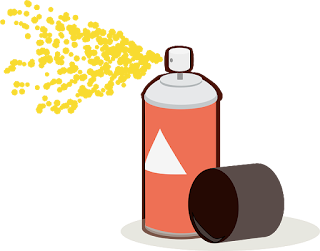Why It Took WHO and CDC So Long to Recognize Aerosols as the Main Problem
You may recall that about a year ago, we were being told to keep 6 feet away from other people and wash hands frequently. That's because they thought the main way the virus spread was through respiratory droplets, a.k.a. fomites.
The theory was that an infected person would cough or sneeze, this would release large respiratory droplets that if you were too close, could land in your mouth or nose or eyes—the origin of the six foot rule. They could also land and persist for some time on surfaces, which you could touch and transfer the virus to those same openings.
Believing this was the main infection route, people were washing packages and vegetables from the grocery store in bleach. There were shortages of hand sanitizer. This is probably the origin of Dr. Fauci's infamous statement, also about a year ago, that normal people don't need to wear masks.
But a lot of people, including the hero in the Wired article, knew that viruses could be transmitted through aerosols. Yet they were hitting a wall where they couldn't get journals to publish their research or the public health people to listen to them.
This was because of conventional wisdom in the medical and public health establishment that only particles smaller than 5 microns could become airborne and cause infections. They were not persuadable by the opinions of lowly engineers and occupational health researchers, who tend to dominate research on aerosols.
The Wired piece describes how a group of intrepid scientists and historians traced that figure back to some research on tuberculosis in the 1960s. It described 5 microns as the aerosol particle size necessary for Mycobacterium tuberculosis to get past nasal mucous and travel deep into the lungs. That got conventionalized in medicine as a rule-of-thumb for all aerosol infections, even though it only applied to tuberculosis.
Viruses like those that cause COVID-19, the flu, and the common cold do not need to travel deep into the lungs to cause infection. They are perfectly happy to take up residence in your nose. Particles a lot larger than 5 microns can contain the viruses, stay airborne, and land in your nose, and infect you. This not, fomites, is the main way SARS-CoV-2 gets you.
To me it's baffling that it took so much effort to bring the public health people around on this. How else did they explain super-spreader events in bars, with few of the same at outdoor events? Or the wildfire infections happening in places like nursing homes? Why did WHO and CDC take until the past month to correct their guidance?
The answer seems to be conceit, parochialism, and ossified thinking in the medical establishment. Shocking, I know.
Read the article for all the details. It's a great detective and fighting-the-establishment story.
Image by OpenClipart-Vectors from Pixabay



